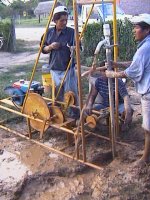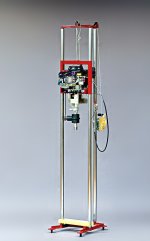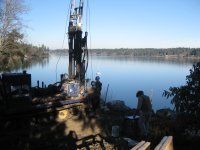fried1765
Super Star Member
- Joined
- Jan 6, 2015
- Messages
- 10,086
- Tractor
- Kubota L48 TLB, Ford 1920 FEL, 8N Ford, Gravely 12 HP "Professional", 48" SCAG Liberty
Just looking at your picture I would guess that you have a bored well;
View attachment 521292 I tried to attach a image of a bored well and it didn't work well Search for shallow bored water well.
A bored well is the modern equivalent of a dug well, normally done with an large auger, than lined with a casing of some type.
A "drilled" well can be done in a couple of different methods, the newest is a rotary drilling machine which can get lots of footage
in a day by using high horsepower applie to a drill bit with high pressure "mud" being injected down hole to lubricate the bit and flush the
drilled material to the surface. Some people are convinced that a rotary water well drill will seal and plug some of the smaller veins of water
between rock layers.
The other "older"method of drilled water wells is done by using a pounder, a heavy bit is raised on a cable an then dropped repeatedly to drive
a hole in the ground and also to drive the casing into the ground, a pounder, driver is believed to fracture the rock surrounding a well to
enable the small veins of water bearing material the well bore passes thru to enter the bore and the combination of lots of small veins can
create a good well as well as locating the larger veins of water. In some areas driven wells will produce good water flow rates at less depths
then rotary drilled wells, as much as 100 ft compared to two to five hundred feet.
I have a 220' drilled well.
I originally did not think about the drilling mud having plugged some of the minor fissures.
Pump sits at the 200' level, to allow for sludge to fall.
My well GPM has increased over the 12 years since it was drilled.
I attribute this to the gradual opening of small fissures in the rock that were initially sealed by the drilling mud.




